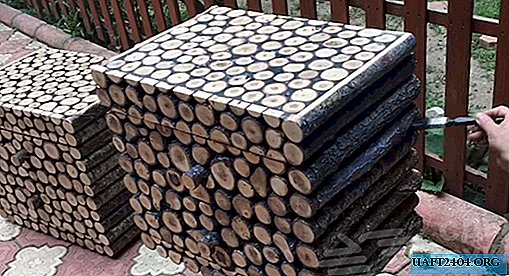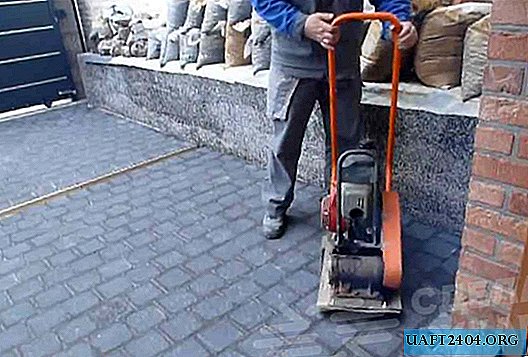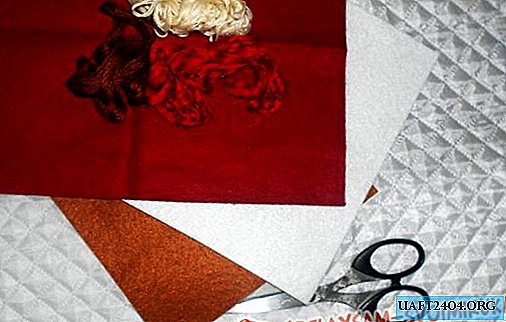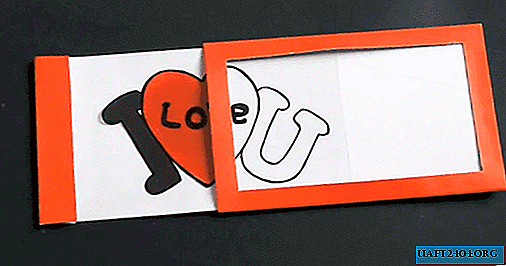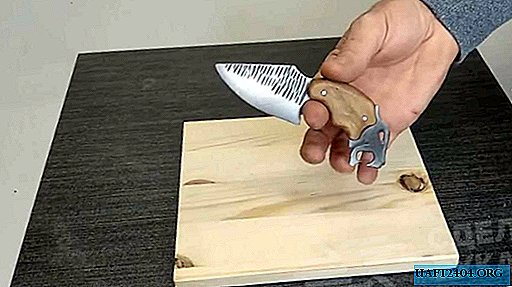Share
Pin
Tweet
Send
Share
Send
Assembling a rowing machine according to this instruction will cost you about 5 thousand rubles. But I decided to do it myself, not for reasons of economy, but simply because I like to work with my hands.
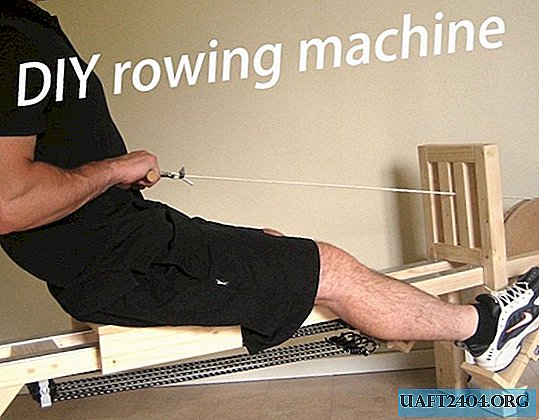



Tools and materials
Material List:
- 2 bolt hooks;
- 2 screw hooks;
- 10 screw rings;
- 4 spring washers of size M12;
- 8 washers M12:
- 8 hex nuts M12;
- Mounting studs M12;
- A handful of screws;
- 1 carbine;
- 2 cable clamps;
- 10 small wheels with a diameter of 3 cm;
- 2 small wheels with a diameter of 4 cm;
- 4x4 wooden beams with a total length of 10 m;
- Wooden pole with a diameter of 2.5 cm and 60 cm in length;
- Wooden board 88 cm long, 30 cm wide and 2.7 cm thick;
- MDF board with dimensions 99x33x1.1 cm;
- Two long aluminum strips (140 cm long, 4 cm wide and 3 mm thick);
- Elastic belts;
- 4 pulleys;
- 2 bearings with an outer diameter of 32 mm and an inner diameter of 12 mm;
- The rope is 2 meters long and 10 mm in diameter.
Tool List:
- Glue for wood;
- Wax for wood;
- Putty for wood;
- Saw;
- Screwdriver;
- Sandpaper;
- Clamps;
- Wood file;
- Drill;
- Drills for drills with a diameter of 6, 12, 15 and 32 mm.

Frame assembly












Saw off 6 short bars of 30 cm long from a wooden beam. Then cut both ends of each beam at an angle of 45 degrees.
Now you need to saw off 6 bars of 10 cm each from the beam, 2 bars 18 cm long, 3 bars 40 cm long, 2 bars 42 cm long, 2 bars 19 cm long and 2 more bars 73 cm long. Finally, make 2 long bars per 170 cm each.
Next, we cut square recesses at one end of the bars 170 and 40 cm long. The depth of the recess should be half the cross-section of the beam, that is 2 cm, and the length and width should be 4 cm. Glue the 170 cm and 40 cm bars with wood glue, folding them into places of notches at right angles. Fasten the structure with two bars 30 cm long (with corners already cut), screwing them with two screws on the inside of the resulting right angle.
Measure 3 cm from the edge at the opposite end of the 170 cm beam and drill a hole with a 15 mm drill. Directly above this hole, drill a recess of 1 cm depth with a 32 mm drill.
Take the two resulting rectangular fragments and fasten them with a bar 10 cm long, starting from the edges with a right angle. Fix the structure with clamps and allow the glue to dry. After that, add another 10-centimeter block at a distance of 25 cm from the edge, and another 83 cm from the edge.
We take the last remaining block of 40 cm. We measure 11 cm from both edges and put marks. We draw two squares 4 by 4 cm, the center of which will be the marks made. Saw a square notch 2 cm deep along the drawn lines.
Screw 42 cm bars to 73 cm bars, then drill a through hole in both holes with a 12 mm drill at a height of 20 cm.
Now we measure 120 cm and at this point we screw on the long beams of the unfinished frame over the 42-centimeter bars.
Next, you need to screw an 18-centimeter block over long long ones - directly between the bars of 73 cm.
We take another bar 18 cm and screw it between the upper edges of the 73-centimeter bars.
Almost ready. It remains to fasten 2 bars of 19 cm in a vertical position between 18-cm bars, leaving a distance of about 2 centimeters between them.
Then it remains to fasten four bars of 30 cm each with sawn corners, fastening them to right angles in the frame structure.
Finally, fill the holes from the screws with wood putty and treat them with sandpaper.
The frame is ready! Hurrah!
Making a wooden pulley




On the MDF board, draw two circles with a diameter of 32 cm and one circle with a diameter of 30 cm. Saw them. Then glue them together so that the smaller circle is between the two large ones, and the centers of all the circles coincide. In the center of the resulting structure, drill a hole with a 12 mm drill. Secure the pulley with bolts by inserting them into specially made holes on one of the edges of the frame.
Place the bearings in recesses with a diameter of 32 mm and a depth of 1 cm. Then connect your wooden pulley to the frame using spring and plain washers, hex nuts and studs. Done.
Movable seat




First, cut a board measuring 30 by 30 centimeters. After that, we make 2 more wooden panels 30 cm long and 8 cm wide. The first fragment will serve as a seat, and the other two - as side parts. Screw the side pieces to the main seat.
Now we fasten two rows of three wheels each on the inside of the seat and two more wheels on the inside of each side panel. Place them at an equal distance from the edges and from each other.
Fill the screw holes with wooden putty and polish well with an emery cloth.
It is time to recall the aluminum strips 140 by 4 cm. Screw them on the upper side of the long horizontal beams of the frame.
We make steps




Saw off two wooden panels 26 cm long and 12 cm wide from a wooden board. Then saw off another two pieces of 12x6 cm. Screw the small pieces at a right angle at the ends of the boards more.
When you're done with this, grab the 2 remaining 10 cm bars. One 12 mm hole needs to be drilled in the side face of each bar. After that, screw them to the 26x12 cm board (on the opposite side of the 12x6 cm section already screwed to it).
Attach the steps to the frame with bolts, passing the latter through the 12 mm holes. Secure them with regular and spring washers, nuts and studs.
As usual, mask the holes from the screws with putty and wipe off the excess.
Load mechanism












To begin, fasten two screw hooks from the bottom of the frame (as always, do not forget to check the photo).
On the underside of the frame we fasten 4 pulleys on one of the 10-centimeter bars, the farthest from the wooden pulley.
Saw the wooden pole into two pieces of 14 and 12 cm, respectively. Drill 6 holes in the longer part and 5 holes in the short part using a 6 mm drill. Spread the holes evenly over the length of the cut. Screw in the 4 screw rings in the center of the long section of the pole. Then screw the 2 bolt hooks around the edges so that they look in the opposite direction compared to the four screw rings. Screw 5 screw rings into a shorter segment, but this time the middle ring should look in the opposite direction.
In our case, we used elastic straps with a length of 85 cm. Fix them with hooks on the screw rings of a longer segment of the pole. Unhook or cut the hooks at the opposite ends of the belts and guide them through the pulleys. Now put the hooks back in place and fasten them on the rings in the 12-centimeter section of the pole.
For the handle you need to cut off 30 cm of a wooden pole. Drill a hole with a diameter of 6 mm in the center of the handle and screw the last screw ring into it. Snap the carabiner through the screw ring. After that, pass the rope through the carabiner and fix it with the cable clamp.
Guide the rope under the frame and guide it around a large wooden pulley. Attach the rope to the screw ring on a short pole length of 12 cm and securely fix it with a clip.
Set the wheels


First, cut a wooden cube with a face of 4 cm, and then saw it diagonally. Screw the 2 resulting fragments to the wooden "legs" of the frame - vertical bars 73 cm long. Place them on the side of the wooden pulley and 2 centimeters from the ends of the legs. Having finished with this, attach the wheel to each base.
Wax coating
Coat all wood elements thoroughly with a layer of wax.
Getting started with the exercises



The most common mistake when exercising on a rowing machine is flexion of the lower back. Try to keep your back as straight as possible.
One exercise cycle on the simulator looks something like this:
1. Lean forward slightly, bending your knees and keeping your arms straight.
2. Start to straighten your legs, leaning slightly back and pulling your hands to the body.
3. Straighten your legs completely. In this case, the hands should be bent at a right angle, and the handle of the simulator is pulled to the stomach.
4. Straighten your arms, lean forward, and bend your knees. That is, return to the original position.
5. Repeat until the desired result is achieved.
Resistance adjustment
To adjust the resistance of the simulator to your own physical form, unhook the hooks of the elastic belts from the rings, and if you want to return the original load, return the hooks to their place. The greater the resistance, the more calories you burn and the faster your back and muscles begin to hurt. If you are used to bringing yourself to complete exhaustion, then train with 4 attached straps. This will strengthen your cardiovascular system and increase stamina.
Extra palm rest
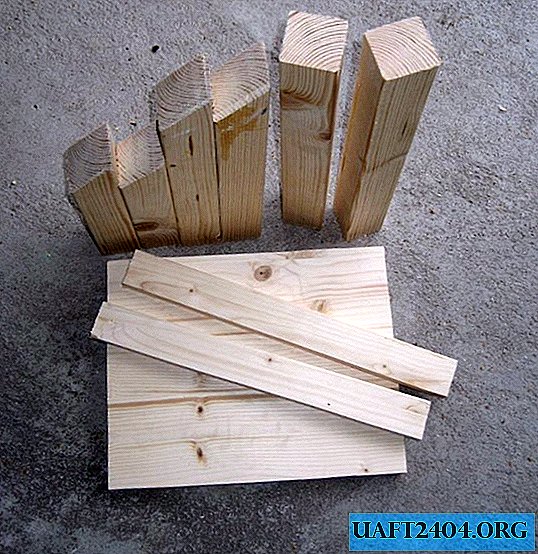





With this palm rest you can swing your biceps more efficiently.
Cut 2 bars of 31 cm length and 2 more bars of 23 cm length. Cut one of the ends of each bar at an angle of 45 degrees.
After that, make 2 bars 35 cm long and another 14 cm long.
Next, you need to make a wooden panel 30 cm long and 24 cm wide, and two more long boards 35 cm long and 3 cm wide.
Glue the boards 35x3 cm to the 35-cm bars, placing them at right angles and parallel to each other. Perpendicular to the resulting structure, screw a 31-cm block with a cut corner, placing it in the center.
Repeat the procedure with the second set of fragments and fasten two identical structures by screwing a 14-cm block between them.
Screw the panel 30 to 24 cm to the cut corners of the 31-cm bars.
For additional stability between the panel and the base, insert two supports in the form of 23 cm bars with cut corners. Fasten everything firmly with screws.
Finally, hide the hats of the screws with wood putty, sandpaper and cover with a uniform layer of wax.
Original article in English
Share
Pin
Tweet
Send
Share
Send

